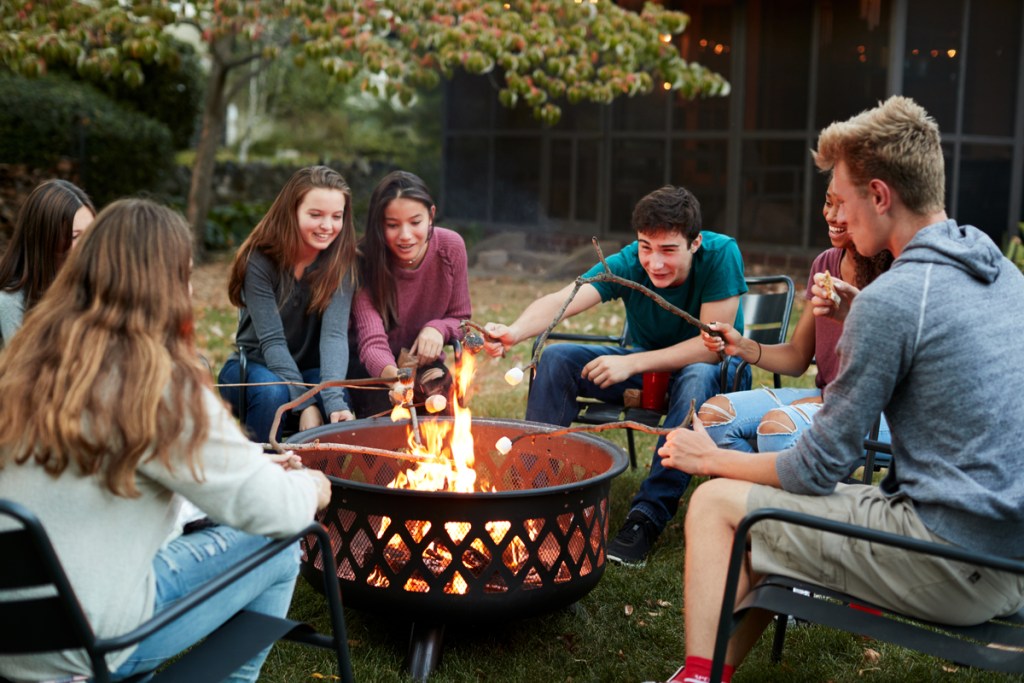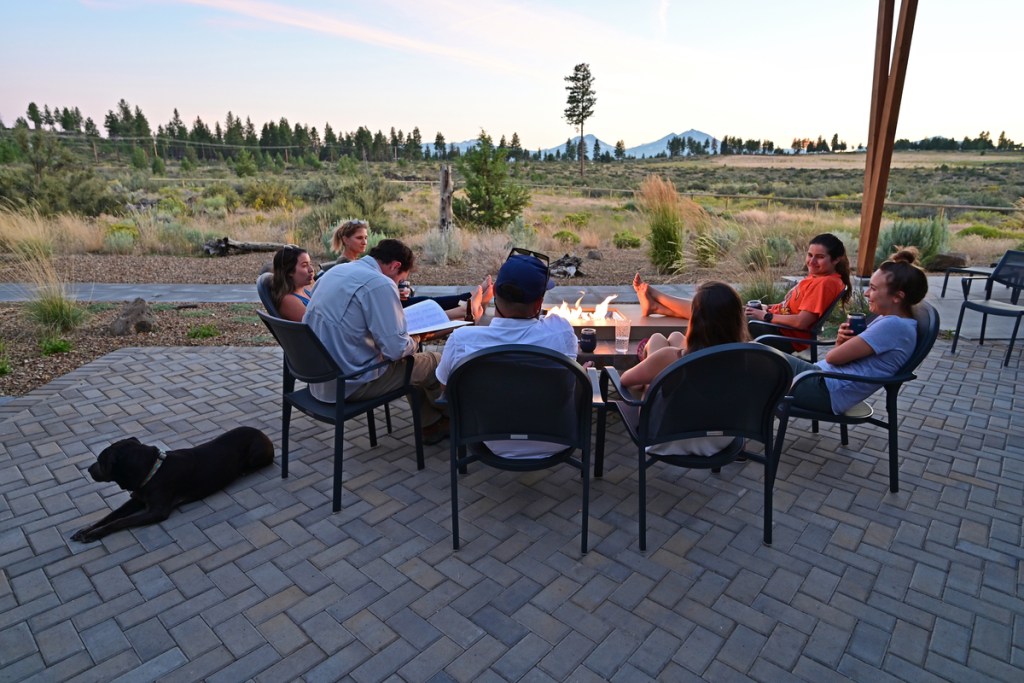
Campfires are a staple of the perfect summer night. It’s just about in our DNA to gather around the open flames, share food and drinks, and swap stories late into the evening. Fireside fun isn’t without its risks, though. Even a small flame can pose a danger to small children and pets, and all it takes is a little bit of wind to turn a controlled fire into a backyard blaze.
This summer, keep your friends and family safe with these key bonfire safety tips.
Safe conditions for burning
Before stacking the firewood, monitor weather conditions and guidance from the state or local Fire Marshal. Do not start a fire during a burn ban or in high winds. Even when the weather is more moderate, keep an eye on the strength and direction of the wind, and consider any potential hazards before you ignite.
Set up the fire pit on a firm, level surface at least ten feet from buildings, trees, and other flammable items. Crucially, do not set it up on wooden decking or in an enclosed space. If you choose to set up your portable firepit over grass, be aware that heat will kill the grass beneath it. To protect your lawn, we recommend investing in a protective heat shield.
Finally, extinguish all the embers before heading inside for the night.
Allow plenty of open space
A shady area may be comfortable for entertaining, but watch out for low-hanging tree branches and shallow tree roots. These are very flammable, so make sure there is ample space and that any overhead branches are at least ten feet above the top of the fire pit.
On chillier nights, it’s natural to sit closer to the fire, but be sure to leave at least three feet of walking space between chairs and the fire pit. With larger groups, a cramped fire pit area can become dangerous, so as the group grows, the buffer between your guests and the flames should as well.
Keep it clutter-free
Fallen leaves, twigs, and pine needles are quick to light if they’re too close to the flame, and kids’ toys are notorious trip hazards. Before striking a match, clear the area of all flammable items and clutter.
Only burn clean fuel
Firewood is not created equal, so only use well-seasoned firewood that is dehydrated and ready to burn. Dry hardwoods like hickory, oak, maple, and birch produce little smoke and few sparks, while softwoods like pine, spruce, and fir provide the tell-tale snap, crackle, and pop of a bonfire.
Do not attempt to start the fire with chemical accelerants or petroleum products, as these can make the flames difficult to control. Further, don’t burn pressure-treated lumber or other construction materials that produce noxious fumes. Instead, use natural materials and store-bought fire starters.

No foreign objects
It’s hard to fight the desire to throw things in a fire. There’s certainly something cathartic about tossing garbage, food, and scrap paper into the flames. However, the fire pit is not an incinerator, and burning certain objects can release toxic fumes, heavy smoke, or accelerate the fire. Fight the urge, and keep all foreign objects out of the pit.
Maintain constant supervision
Wind and weather conditions can change rapidly, so someone must always be nearby the fire to extinguish it in case of emergency. In addition to monitoring the fire, someone also needs to keep an eye on children and pets who are often fascinated by fire and might find themselves burned by their curiosity.
Stay sober
Sharing a drink by the fire pit is a great way to relax and socialize, but drinking to excess leads to poor physical coordination and decision-making. Exercise moderation and remind your guests they can exercise fire-safe practices and still have a fun night.
Put it out at the end
Even if a firepit appears to have died out at the end of the night, embers tend to burn underneath the charcoal. Wind can reignite them or spread burning embers across the yard, potentially reaching something flammable. At the end of the night, put out the fire with plenty of cold water and use a shovel or rake to soak and stir the ashes until they are cool enough to touch with your bare hand.
Keep the ancient traditions alive this summer and gather around a firepit with the people you love. Share your favorite songs and stories, spend time in peaceful silence, and, most importantly, stay safe.



